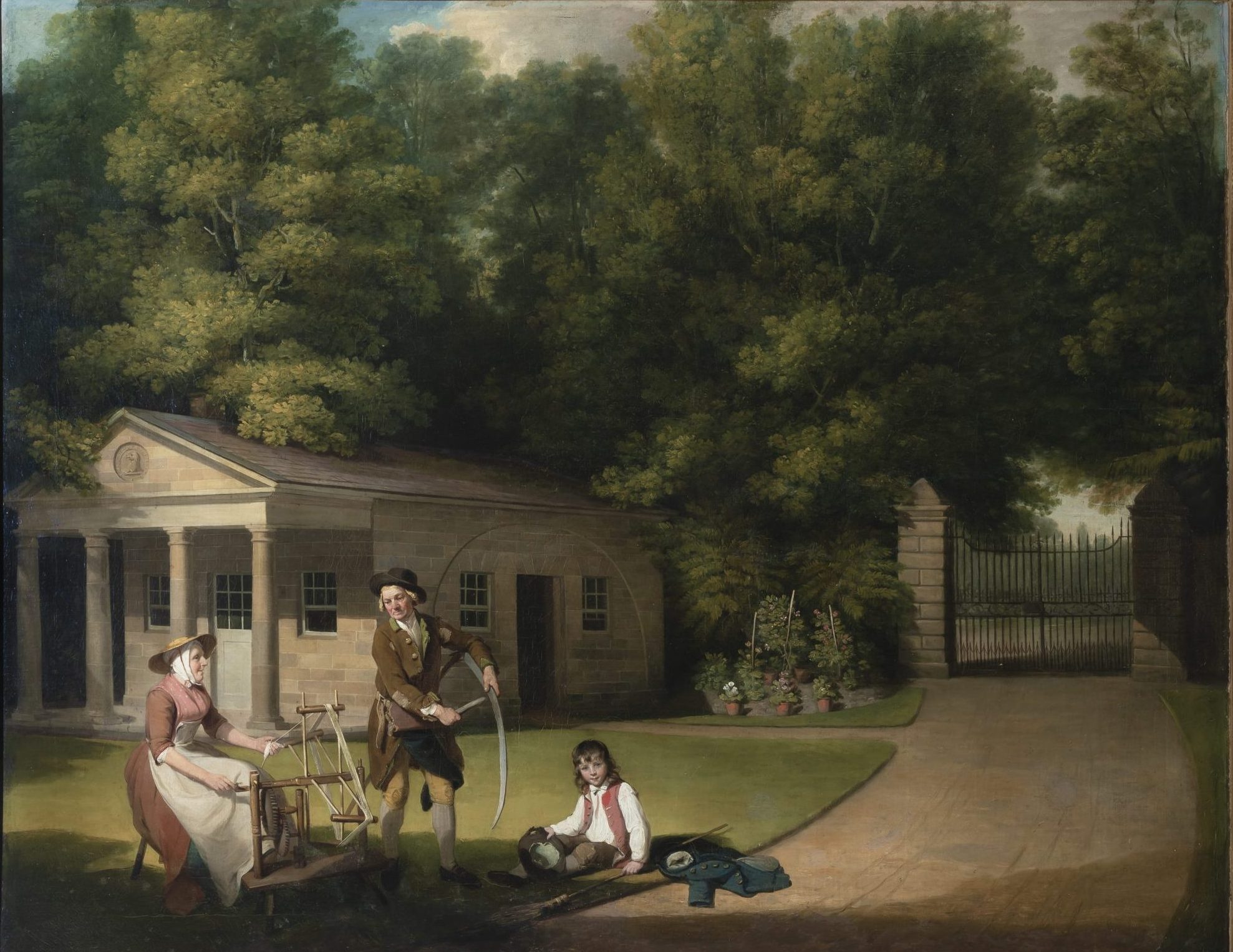
Peter Moore
On Tuesday 10 February 1829, at a General Assembly of the Royal Academy of Arts, John Constable was elected as a Royal Academician, taking the place of the recently deceased William Redmore Bigg.
This process of revolving doors at the Academy (whose prestigious membership was limited to eighty artists) was commonly reported in the press, and so the event described above is not particularly noteworthy. However, it does provide a poignant reminder that for every artist of the period who is today a household name in British art, there are many more who were highly successful in their lifetimes but remain absent from the canon.
William Redmore Bigg is a good example of such an artist. Over a period of forty-seven years, from 1780 to 1827, he exhibited 129 paintings at the Royal Academy’s Summer Exhibitions. This article focuses on his 1786 submission: Lodge and Gateway, with Portraits of Its Inhabitants, Belonging to Lord Howard, at Audley End, Essex. This painting can today be seen on display at Audley End, Essex, but it was originally intended to hang in the family’s London townhouse. The specificity of its subject matter and location, which is made explicit in the published title, is unusual; Bigg was a prolific painter of scenes of rural life, but they tended to be generic and typically had a fictional air. Many were reproduced in printed form with titles such as The Husbandman’s Return from Labour, or Sunday Morning a Cottage Family Going to Church.
The reputation that Bigg gained through these kinds of works has resulted in him being primarily remembered as one of a number of artists who sought to emulate the spirit of Thomas Gainsborough’s ‘cottage door’ scenes: pictures in which the rural poor are depicted at the threshold of their rustic properties, and where the intended emotional response of the viewer is chiefly one of sympathy. But here, Bigg’s characters are shown in a professional capacity, at work in the manicured grounds of Audley End. They are reasonably smartly dressed, though the man’s and the boy’s clothes appear to have patches sewn on, perhaps to repair holes sustained through their labour. The backdrop is not a rustic cottage, but a classically inspired building with a colonnaded portico. In fact, the painting may be better understood within the broad category of ‘estate portraiture’.
While there is often a tendency for scholars to think about this genre in terms of country houses themselves, views of estates from this period are just as likely to feature assets beyond the house, including working facets and symbols of productivity. It was not uncommon for estate views to include workers; however, Bigg depicts them at surprisingly close quarters, with a heightened sense of character. The boy is particularly notable in this regard, with an arresting gaze focused squarely on the viewer. There is the feeling of a true portrait – not simply a figurative study for which a model happened to be required.
But is this painting really about these three figures, or did it seek to say something more about the implied benevolence of their employer who commissioned the work? What assumptions or beliefs about the rural poor, or indeed the rural elite, did this painting seek to deny or confirm? And is this truly an image of rural life, or one that can actually be more firmly rooted to an urban culture of artistic production and spectatorship?
January 2022




